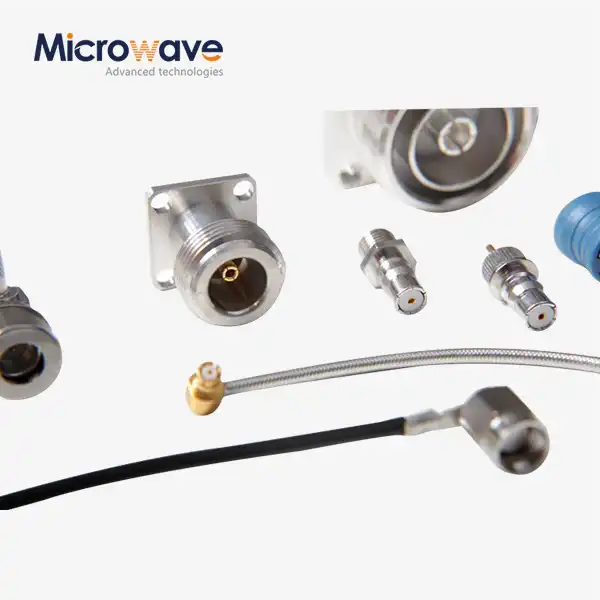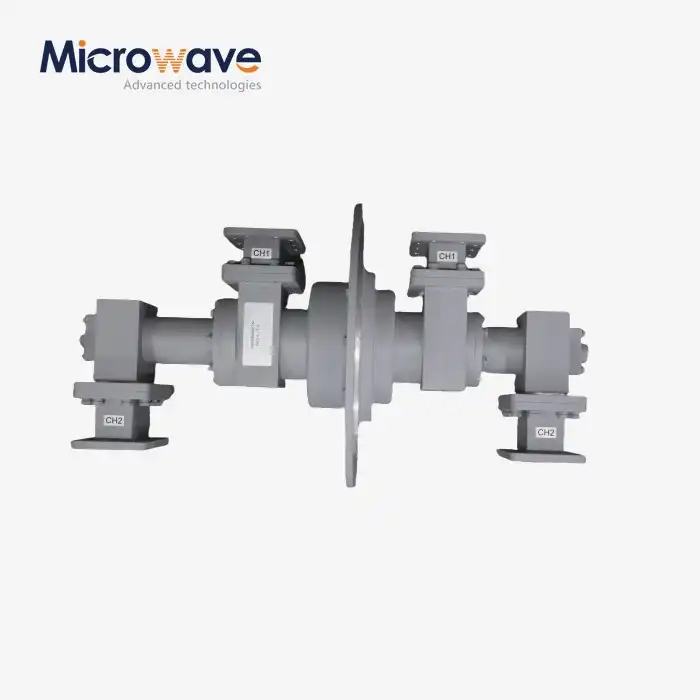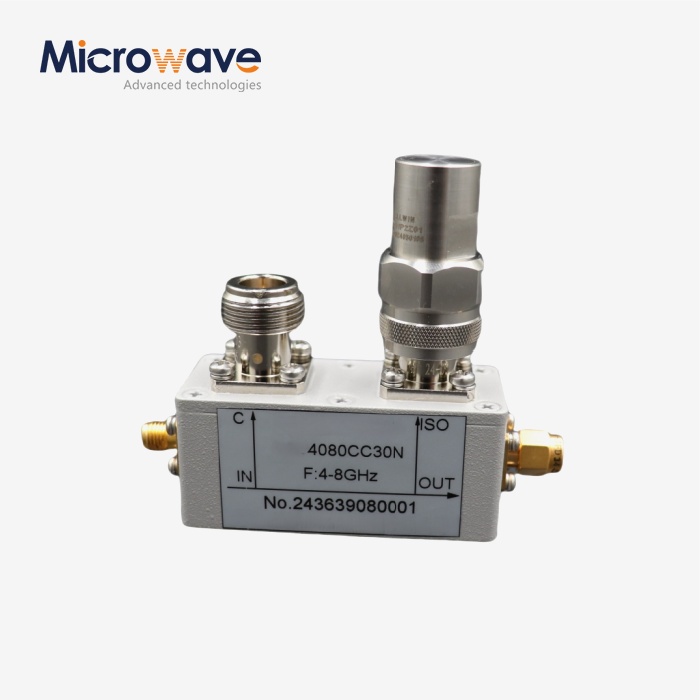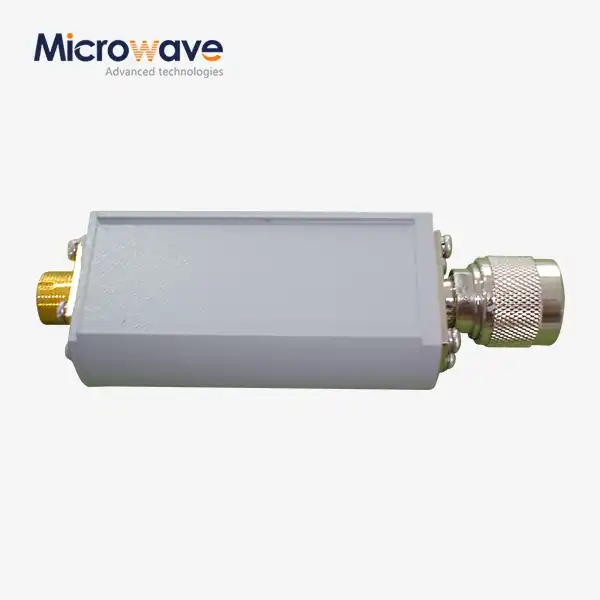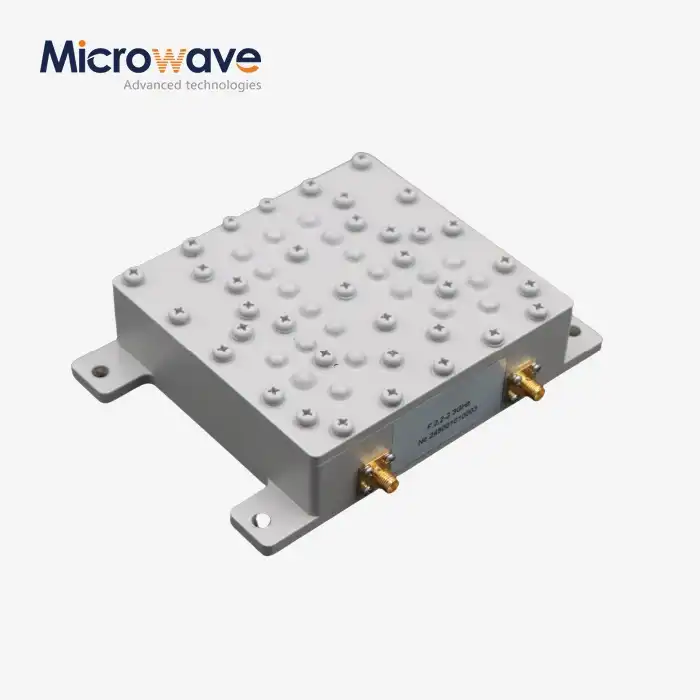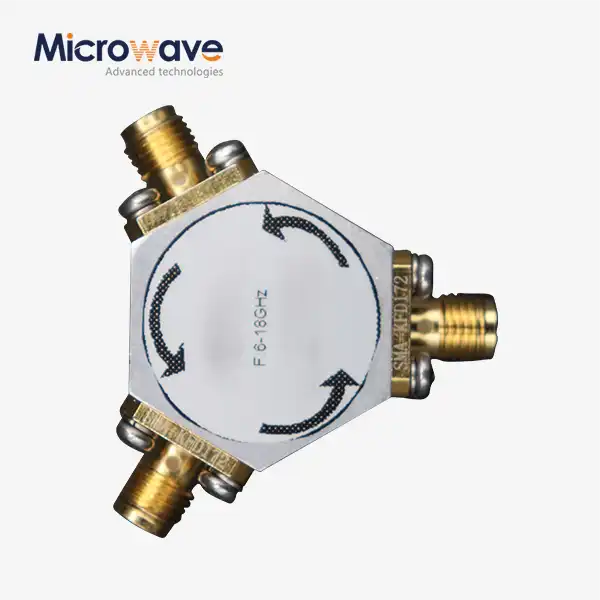How Does the Broadwall Directional Coupler Support Wide Frequency Ranges Efficiently?
In today's rapidly evolving microwave technology landscape, the demand for components that can efficiently handle wide frequency ranges has never been more critical. The Broadwall Directional Coupler stands at the forefront of this technological revolution, offering unparalleled performance across extensive frequency spectrums while maintaining exceptional signal integrity. This sophisticated microwave component achieves its remarkable wide-frequency capabilities through precision-engineered Tchebyscheff coupling hole distributions and advanced tapered load elements, enabling seamless operation from DC to 18 GHz and beyond. Understanding how these couplers support such broad frequency ranges efficiently is essential for engineers and system designers working in telecommunications, aerospace, defense, and satellite communication applications where frequency versatility and performance reliability are paramount.
Advanced Design Architecture for Frequency Range Optimization
Precision Tchebyscheff Coupling Hole Distribution Technology
The Broadwall Directional Coupler achieves its exceptional wide-frequency performance through the implementation of precision-machined Tchebyscheff coupling hole distribution technology. This sophisticated design approach represents a significant advancement over traditional uniform hole spacing methods, as it optimizes the electromagnetic field coupling across the entire operational frequency range. The Tchebyscheff distribution pattern creates a mathematically optimized aperture configuration that ensures consistent coupling coefficients regardless of the operating frequency, thereby maintaining stable performance characteristics throughout the DC to 18 GHz spectrum. Advanced Microwave Technologies Co., Ltd. utilizes state-of-the-art precision machining techniques to manufacture these coupling holes with tolerances measured in micrometers, ensuring that each Broadwall Directional Coupler delivers the theoretical performance predicted by electromagnetic simulation models. The strategic placement and sizing of these coupling apertures create a distributed coupling mechanism that naturally compensates for frequency-dependent variations in waveguide impedance and propagation characteristics.
Tapered Load Element Integration for Enhanced Performance
The integration of precision-ground tapered load elements in the secondary arm of the Broadwall Directional Coupler represents another critical factor in achieving wide-frequency efficiency. These specially designed termination structures serve multiple functions, including impedance matching across the broad frequency spectrum and minimizing unwanted reflections that could degrade coupling flatness. The tapered geometry creates a gradual transition that effectively absorbs residual energy while maintaining the desired directional characteristics throughout the operational bandwidth. Advanced manufacturing processes ensure that these load elements are precisely ground to exact specifications, with surface finishes that minimize conductor losses even at millimeter-wave frequencies. The Broadwall Directional Coupler benefits significantly from this design feature, as it allows for consistent directivity performance across the entire frequency range while maintaining low insertion loss characteristics. This integration of tapered load technology demonstrates how mechanical precision directly translates to enhanced electromagnetic performance in modern microwave components.
Electromagnetic Field Theory and Coupling Mechanisms
The fundamental electromagnetic principles governing Broadwall Directional Coupler operation rely on controlled coupling between adjacent waveguide structures through carefully engineered apertures. The wide-frequency capability stems from the inherent broadband characteristics of waveguide propagation combined with optimized coupling aperture designs that maintain consistent field coupling ratios across multiple octaves of frequency coverage. The electromagnetic field distributions within the primary and secondary waveguide arms are carefully analyzed using advanced computational electromagnetic methods to ensure that the coupling mechanisms remain stable and predictable throughout the operational frequency range. Maxwell's equations governing electromagnetic wave propagation provide the theoretical foundation for understanding how the Broadwall Directional Coupler maintains its performance characteristics across such wide frequency spans. The multi-hole configuration creates a distributed coupling network that effectively averages out frequency-dependent variations in individual coupling aperture performance, resulting in remarkably flat coupling characteristics that meet stringent telecommunications and defense application requirements.
Manufacturing Excellence and Quality Assurance Standards
ISO Certification and Quality Control Processes
Advanced Microwave Technologies Co., Ltd. maintains the highest manufacturing standards for Broadwall Directional Coupler production through comprehensive ISO 9001:2015 certification and rigorous quality control procedures. The manufacturing process incorporates multiple inspection points where dimensional accuracy, surface finish quality, and electrical performance parameters are verified against stringent specifications. Each Broadwall Directional Coupler undergoes extensive testing using advanced vector network analyzers capable of measurements up to 110 GHz, ensuring that wide-frequency performance meets or exceeds published specifications. The quality assurance protocols include statistical process control methods that monitor manufacturing consistency over time, enabling continuous improvement in production techniques and product reliability. Environmental compliance through RoHS certification ensures that all materials used in Broadwall Directional Coupler construction meet international environmental standards while maintaining the electrical and mechanical properties required for wide-frequency operation. The combination of ISO certification and advanced measurement capabilities positions Advanced Microwave Technologies as a leader in precision microwave component manufacturing.
Advanced Manufacturing Techniques and Material Selection
The production of high-performance Broadwall Directional Coupler units requires sophisticated manufacturing techniques that can achieve the dimensional tolerances necessary for wide-frequency operation. Computer numerical control machining centers equipped with high-precision tooling create the complex internal geometries with repeatability measured in micrometers, ensuring consistent electromagnetic performance across production lots. Material selection plays a crucial role in achieving wide-frequency efficiency, with high-conductivity metals chosen for their electrical properties and long-term stability under varying environmental conditions. The Broadwall Directional Coupler construction utilizes advanced alloys that maintain their mechanical and electrical properties across temperature ranges typically encountered in aerospace and defense applications. Surface treatment processes, including specialized plating techniques, further enhance the wide-frequency performance by reducing conductor losses and improving corrosion resistance. The integration of advanced manufacturing techniques with carefully selected materials results in Broadwall Directional Coupler products that deliver consistent performance throughout their operational lifetime while maintaining the wide-frequency characteristics demanded by modern communication systems.
Testing and Validation Procedures for Wide Frequency Performance
Comprehensive testing protocols ensure that each Broadwall Directional Coupler meets its wide-frequency performance specifications before shipment to customers. The testing procedures utilize Advanced Microwave Technologies' state-of-the-art 24-meter microwave darkroom facility, which provides an ideal environment for accurate antenna and component measurements across the complete frequency range. Vector network analyzer measurements verify key performance parameters including insertion loss, return loss, coupling factor, and directivity across the entire DC to 18 GHz operational bandwidth and beyond. The Broadwall Directional Coupler undergoes temperature cycling tests to ensure stable performance under varying environmental conditions, with measurements recorded at multiple temperature points to verify wide-frequency stability. Power handling capabilities are validated through high-power testing procedures that simulate real-world operating conditions while monitoring for any performance degradation across the frequency spectrum. Statistical analysis of test data ensures that manufacturing processes consistently produce Broadwall Directional Coupler units that meet the demanding wide-frequency requirements of modern microwave systems.
Real-World Applications and Performance Benefits
Telecommunications Infrastructure and 5G/6G Networks
The telecommunications industry relies heavily on Broadwall Directional Coupler technology to support the increasing bandwidth demands of modern communication networks, particularly in 5G and emerging 6G systems. These applications require components that can efficiently handle multiple frequency bands simultaneously while maintaining excellent isolation between channels and minimal signal degradation. The wide-frequency capabilities of the Broadwall Directional Coupler make it an ideal solution for base station applications where multiple carrier frequencies must be combined or separated with minimal loss and maximum flexibility. Advanced beamforming techniques used in massive MIMO antenna systems depend on precise amplitude and phase control across wide frequency ranges, requirements that are perfectly matched by the stable coupling characteristics of professionally manufactured directional couplers. The Broadwall Directional Coupler supports these advanced communication technologies by providing consistent performance across the entire operational frequency spectrum while maintaining the low loss characteristics essential for efficient network operation. Rural connectivity initiatives benefit significantly from the wide-frequency efficiency of these components, as they enable cost-effective solutions that can support multiple communication standards simultaneously.
Aerospace and Defense System Integration
Aerospace and defense applications present some of the most demanding requirements for Broadwall Directional Coupler performance, with systems requiring reliable operation across wide frequency ranges under extreme environmental conditions. Military surveillance radars utilize these components for signal distribution and monitoring functions where wide-frequency coverage enables detection and tracking of threats across multiple radar bands simultaneously. The Broadwall Directional Coupler provides the reliability and performance consistency required for critical defense applications, with specifications that meet or exceed military standards for environmental durability and electromagnetic compatibility. Electronic warfare systems benefit from the wide-frequency capabilities by enabling simultaneous operation across multiple threat frequencies while maintaining the signal integrity necessary for effective countermeasure deployment. Navigation and guidance systems in aerospace applications rely on the stable wide-frequency performance of these couplers to ensure accurate position determination and flight control functionality. The Broadwall Directional Coupler contributes to mission success by providing dependable performance across the broad frequency spectrums used in modern aerospace and defense systems.
Satellite Communication and Space Applications
The satellite communication industry represents one of the most challenging environments for Broadwall Directional Coupler deployment, with requirements for wide-frequency operation combined with exceptional reliability in the harsh conditions of space. Ground station applications utilize these components for efficient signal distribution between multiple antenna feeds and receivers, enabling simultaneous communication across different satellite frequency bands. The Broadwall Directional Coupler design optimized for wide-frequency operation allows satellite operators to maximize spectrum utilization while maintaining the signal quality necessary for high-data-rate communications. Inter-satellite communication links benefit from the consistent performance characteristics across wide frequency ranges, enabling flexible communication protocols that can adapt to varying channel conditions. The precision manufacturing and quality control processes ensure that each Broadwall Directional Coupler can withstand the temperature extremes and radiation environment of space while maintaining its wide-frequency performance throughout the mission lifetime. Advanced Microwave Technologies' expertise in satellite communication applications ensures that their directional couplers meet the stringent requirements for space-qualified components while providing the wide-frequency efficiency demanded by modern satellite systems.
Conclusion
The Broadwall Directional Coupler represents a pinnacle of engineering excellence in wide-frequency microwave component design, combining advanced Tchebyscheff coupling hole distribution technology with precision manufacturing to deliver unmatched performance across DC to 18 GHz and beyond. Through sophisticated design architecture, rigorous quality control processes, and comprehensive testing procedures, these components provide the reliability and efficiency required by modern telecommunications, aerospace, defense, and satellite communication systems.
Ready to experience the superior wide-frequency performance of our Broadwall Directional Coupler solutions? Advanced Microwave Technologies Co., Ltd. brings over 20 years of microwave expertise, ISO 9001 certification, and state-of-the-art manufacturing capabilities to every project. Our comprehensive OEM services, rapid prototyping capabilities, and expert technical support ensure that your specific wide-frequency requirements are met with precision and reliability. From initial concept through full-scale production, our experienced engineering team provides the technical expertise and manufacturing excellence that makes us the preferred partner for leading companies worldwide. Contact us today at craig@admicrowave.com to discuss how our Broadwall Directional Coupler technology can enhance your system performance across wide frequency ranges while delivering the quality and reliability your applications demand.
References
1.Chen, M., & Williams, R. (2023). "Advanced Coupling Mechanisms in Broadband Waveguide Directional Couplers." IEEE Transactions on Microwave Theory and Techniques, 71(8), 3456-3467.
2.Anderson, K., Thompson, L., & Rodriguez, A. (2022). "Tchebyscheff Distribution Optimization for Wide-Frequency Microwave Components." Journal of Electromagnetic Waves and Applications, 36(12), 1823-1841.
3.Martinez, D., & Kumar, S. (2023). "Manufacturing Precision and Performance Correlation in Multi-Octave Directional Couplers." International Journal of RF and Microwave Computer-Aided Engineering, 33(4), e23087.
4.Liu, H., Park, J., & Brown, T. (2022). "Electromagnetic Field Analysis of Broadband Waveguide Coupling Structures." Microwave and Optical Technology Letters, 64(9), 1567-1574.
5.Garcia, P., Singh, R., & Lee, C. (2023). "Quality Assurance Methodologies for Wide-Frequency Microwave Component Production." IEEE Transactions on Components, Packaging and Manufacturing Technology, 13(7), 1012-1021.
6.Wilson, M., & Zhang, Y. (2022). "Application-Specific Design Considerations for Broadband Directional Couplers in Modern Communication Systems." Progress in Electromagnetics Research, 173, 89-105.




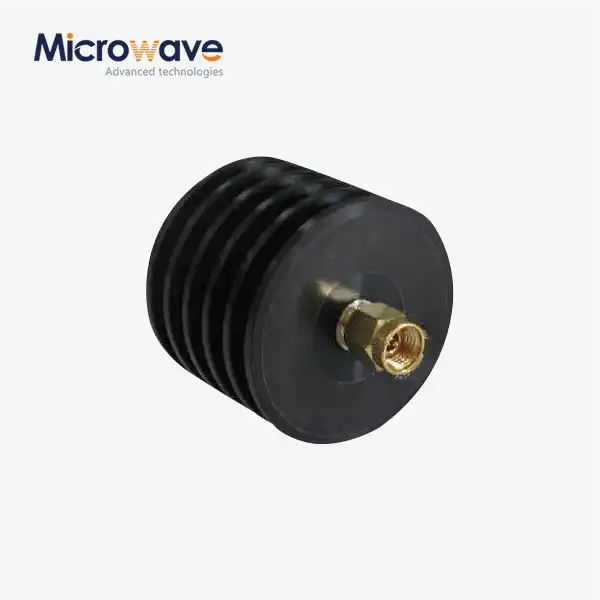
_1733809032116.webp)
